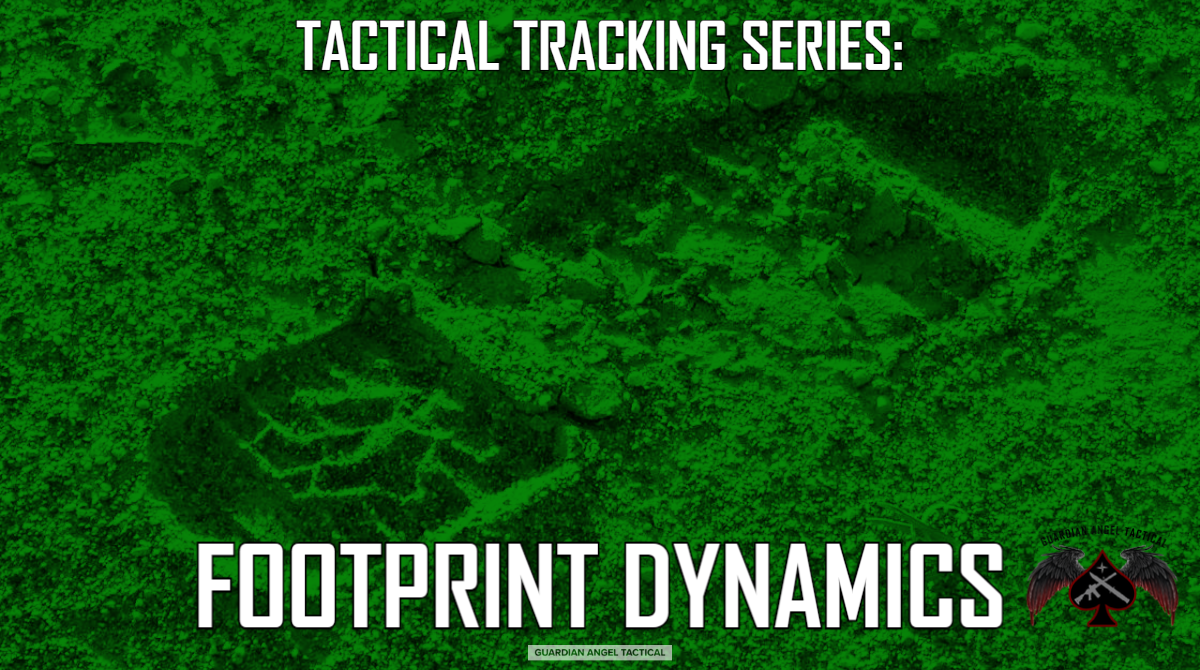Human Footprint Dynamics
An essential part of learning to track humans is understanding footprint dynamics. Most people think a human’s footprint does little more than tell you that a person stepped in a specific place. However, the amount of information you can gather from a single footprint is impressive. The two most important features of the footprint are the Primary Impact Point (PIP) and the Terminal Point (TP).

Primary Impact Point (PIP)
The primary impact point is the first component of a footprint and typically occurs as a person’s heel strikes the ground. The depth of the PIP is directly related to the amount of force behind the portion of the foot which strikes the ground. The image below shows the primary impact point of a person walking normally, which in this case, is a heel strike.

Foot Roll
The second component of footprint dynamics is the foot roll and is simply the portion of the print which occurs in the direction of travel between the PIP and the Terminal Point.

Terminal Point (TP)
By far, one of the most important features of footprint dynamics is the Terminal Point (TP). The terminal point tells us a significant amount of detail about the person we are following. When a person is walking normally, the terminal point results in what we call Toe Dig. As the person pushes off from their toe, a depressed, dug-out area results. Additionally, dirt and debris can be flung rearward into the track or further depending on the speed the individual is moving.

When the foot leaves the terminal point, there is a potential for a small amount of dirt to be dragged from the edge of the terminal point forward in the direction of travel. This “Toe drag” is amplified in a person who is very tired or injured. Realistically, “toe drag” is not a proper name for this phenomenon, as the dragging action can just as easily be done by the heel of a person who is walking backwards.
Factors That Affect Typical Footprint Dynamics
Changes in Speed
When a person changes the speed in which they are walking the characteristics of their tracks changes distinctly. When increasing speed the toe dig becomes more prominent as the individual pushes off from the ground. A good way to think about this is to imagine a sprinter pushing off of the starting blocks on a track. When a person slows down, the Primary Impact Point will have greater depth as they allow the ground to absorb their momentum. The more abruptly a person changes speed, the more obvious the changes to the PIP and TP will be.
Walking Backwards
Most people believe that they can throw off a tracker by walking backwards. However, a trained tracker will have no problem identifying the direction of travel because they are looking for the characteristics which are unique to the PIP and TP. When a person is walking normally (forward), the PIP will be a heel strike and the TP will be a toe dig. If the person you are tracking walks backwards, this simply reverses the indicators so that the PIP is a toe strike and the TP is a heel dig. The quarry may think that he is fooling the tracker, when in reality he is simply allowing the tracker to close the time-distance-gap between them.
Terrain
As one might expect, the terrain can have a significant effect on the dynamics of a footprint. When walking up steep hills, the PIP and TP may include only the toe. Conversely, when walking down steep inclines, the PIP and TP may include only the heel.
Injuries
An injured person may drag one or both feet on the ground, or may show favor to one foot or the other which can be identified by a more obvious PIP and TP in one foot vs. the other. Someone who is uninjured typically walks with equal force applied by each foot. To demonstrate this yourself, try putting a small, sharp rock in one shoe and walking across an area which leaves clean tracks. Notice how you apply less pressure to the foot which is being jabbed by the rock in order to lessen the pain. Remember how your tracks look in this instance and you should have no problem identifying an injured quarry in the future.


